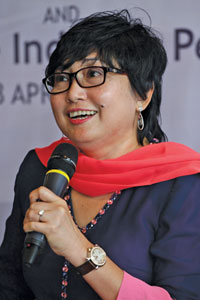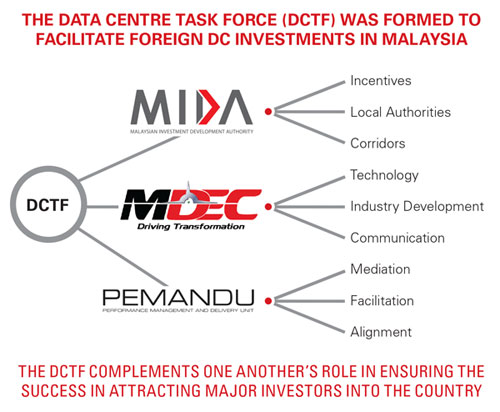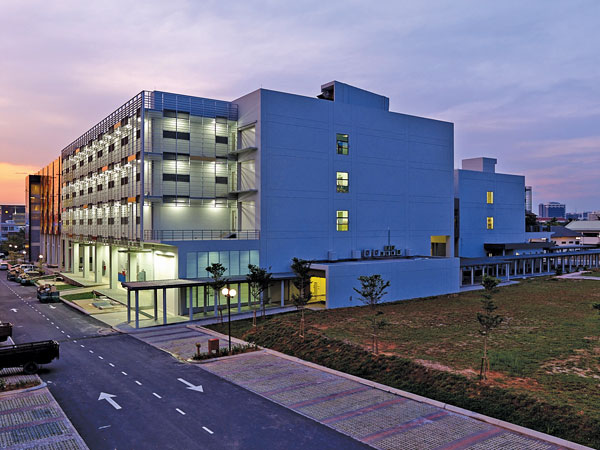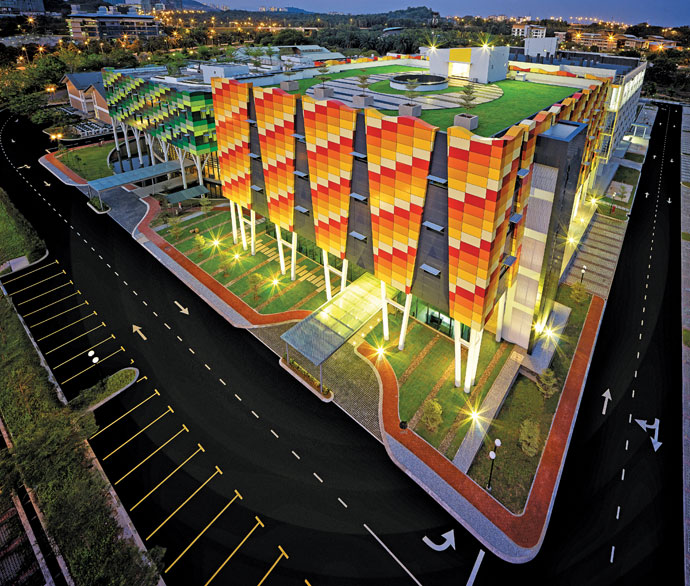Malaysia’s progress on the road to becoming a regional data centre hub is rapidly gaining momentum. Four recent developments illustrate this.
First, Malaysia’s cloud services and data centre industry sector revenue grew 26 percent in 2014 to 795 million ringgit (US$212 million) from RM630 million ($168 million) in 2013. Exports grew from 7 percent to 18 percent. Key industry sectors that contributed to the industry revenue include the federal government (29 percent), banking and financial (19 percent), and content and technology (17 percent). The government also reported growth in high-value data centre services, such as managed services, that accounts for 50 percent of the total revenue, a 20-percent increase from 2013.
“We are targeting the industry to grow by 15 percent, to RM915 million [$252 million] by the end of 2015,” noted Dato’ Yasmin Mahmood, CEO of Multimedia Development Corporation (MDeC), Malaysia’s data centre sector development agency, at an April 8th press conference. The press conference was in conjunction with the second recent development in the country’s data centre industry — the official announcement of Sedenak Iskandar Data Hub (SIDH), a new, 700-acre data centre hub in Sedenak, in the Iskandar Region in the state of Johor. The hub is equipped with robust, state-of-the-art infrastructure and supported by high capacity power and reliable connectivity.

“Cloud services and data centres is a key sector identified to contribute to the national gross income.”
“Cloud services and data centres is a key sector identified to contribute to the national gross income,” said Dato’ Yasmin. “With the new data hub, we aim to attract high value investments from top cloud services and data centre providers to Malaysia to further accelerate the growth of industry and position Malaysia as a world-class data hub in the region.” MDeC says the Sedenak hub will create “a healthy ecosystem for local businesses to scale their capabilities and competencies with knowledge sharing from established data centre players. It will also contribute to the development of sustainable communities where future generations can continue to thrive and expand.” The Data Hub is a collaborative effort between MDeC, the Performance Management and Delivery Unit (PEMANDU), the Malaysian Investment Development Authority (MIDA), Johor Corporation (JCorp) and the Iskandar Regional Development Authority (IRDA).
The third development is the formation of the Data Centre Task Force (DCTF), a joint task force made up of representatives from MDeC, PEMANDU and MIDA.
“The DCTF was formed to facilitate foreign DC investments in Malaysia,” says Tan Tze Meng, Senior Manager, Cloud and Data Centre. “Its main objective is to play the role of a ‘one-stop’ entity to assist potential data centre investors evaluating Malaysia as a location for their next DC investment. The DCTF also oversees and facilitates the implementation of the project once the investor has decided to invest in Malaysia.” MDeC’s role is on communications, industry development and technology advisor for the industry. The roles of the other agencies in the task force are illustrated in the diagram.
How the Task Force Works
“The investor can contact MDeC to get more details or information on the DC landscape and the stakeholders involved,” Mr. Tan explains. “MDeC will connect with the investor to understand their requirements and specifications in order for us to provide the necessary assistance. Upon issuance of the RFI, the DCTF will connect with the relevant stakeholders to get more detailed information as required by the investors. The stakeholders include the power providers, telcos, land owners and other relevant utilities and government/state agencies.” DCTF is the point of contact for investors to link up with other agencies, adds Mr. Tan. It will be able to oversee and accelerate the entire process, from site selection to project implementation and facility build.

“DCTF constantly works with the regulators to provide a competitive environment for investors,” he notes, working on such areas as competitive capacity pricing, power cost, land matters, tax issues and any other critical matters. “DCTF works together with the stakeholders to ensure they understand the issues and importance of a data centre and the impact to the economy. In general, the DCTF eases the end-to-end process of a DC investment into the country.”
In mid-June, Site Selection asked Mr. Tan to elaborate on the significance of the new data centre hub in Johor, which is at the southern tip of peninsular Malaysia, adjacent to Singapore.
“The Data Hub park is to provide an area conducive to data centres — equipped with the right infrastructure and ecosystem to ensure the sustainability and growth of a DC business,” he explains. “It is located in Johor to complement Singapore’s position as the regional hub for telecommunications, in terms of the quantity of submarine cable systems landing in Singapore. Johor’s land mass at competitive prices and Malaysia’s lower electricity tariff is a good complement to Singapore, especially for investors planning a large data centre build.”
SIDH’s location is approximately 50 km. from Singapore, which translates into a 1- to 2-millisecond latency for communications. It is also designed from the ground up to be a data centre park, which means infrastructure and utilities will be world class and abundant, Mr. Tan points out. “It also has a large, available land mass for future expansion and low risk in terms of its vicinity to a flight path and residential areas. Its location in the Iskandar region means that it will have access to housing and commercial areas that are not too far away, as well as local universities that can supply the talent needed.”
The fourth recent development is another investment in Malaysia on the part of Huawei Technologies Co. Ltd., a Shenzhen, China-based multinational networking and telecommunications equipment and services company. In June, Huawei opened its Asia Pacific Digital Cloud Exchange in Iskandar.

According to a June 16 report in Digital News Asia, the Exchange will aggregate and distribute digital music, mobile games, video and other multimedia services to telcos in Malaysia and the rest of the Asia Pacific region. “These aggregated multimedia services will help telco operators shape a digital service ecosystem,” notes the report. Huawei Malaysia CEO Abraham Lui is quoted as saying, “Our investment in this facility is a major milestone in making Malaysia our regional business gateway.”
Four Malaysia Data Centres For NTT MSC
NTT MSC, a wholly owned subsidiary of Tokyo-based Nippon Telegraph and Telephone, has been a key player in Malaysia’s data centre and cloud services sector for several years. Its fully owned subsidiary NTT MSC Sdn. Bhd. operates data centres in Malaysia, including CBJ3 that opened in April 2012 and CBJ4, launched in 2014.
“Our data centres are purpose built, designed Tier-3 and unique; they house tenantable office space at an adjacent building, which is unique amongst data centre players in the market,” says Mr. Ken Deguchi, President & CEO of NTT MSC Sdn. Bhd. “This complements our core business to enable organisations to be located close to their core equipment.” Deguchi says both data centres are green initiatives. “Cost is a key consideration to our customers. Hence optimising a key cost component such as energy usage will result in major savings, given the fact that operational costs are rising. Overall, in this new age, going green optimises the power utilisation.”
Furthermore, both data centres are self-owned, self-built and self-managed by NTT MSC Sdn. Bhd. “In total, NTT MSC has four data centres, three of which belong to us, and we have ample space within our premises to expand.” The first data centre, CBJ1, was built in 2002, and CBJ2 was sourced in 2008 from a multitenant data centre wholesaler.

“Our CBJ3 and CBJ4 data centres have internationally recognised certifications,” says Deguchi, adding that NTT MSC has obtained data centre certifications for both building design and operations to the ANSI/TIA 942 Standard. While both CBJ3 and CBJ4 data centres have obtained the ISO27001:2005, Payment Card Industry Data Security Standard (PCIDSS), Green Building Index ( GBI ) and Leadership in Energy and Environmental Design (LEED), the latter has also achieved the accreditation for Threat Vulnerability Risk Assessment (TVRA ), which is a requirement set by the Financial & Banking Industries.
“Our certifications show our customers that we value their concerns on security and service trustworthiness, especially in the areas of physical and information security,” says Deguchi. “We note that over the last few years some of our customers have placed their primary data centres with us, while maintaining their Disaster Recovery site elsewhere and vice versa. Our facility also features NTT Communications’ Enterprise Cloud platform — the world’s first private cloud to use SDN (Software Defined Networking) and with a global network of more than 130 secure data centres in 196 countries. We are also part of the Entry Point Project 3 (EPP3) under the National Key Economic Area (NKEA) Business Services of the Economic Transformation Programme, which helped to spur the growth of the industry through its initiatives such as working with stakeholders to lower cost of bandwidth, increasing the capability of data centres with cost subsidies on certification for DC and talent development training programmes. Similar contributions were also made through our active participation in the Malaysian Data Centre Alliance (MDCA).”
Deguchi says Malaysia is an ideal location for NTT MSC’s data centres and that the sector should thrive in the future for several reasons:
- Malaysia is strategically located — far from seismic active zones.
- Malaysia has a stable and superior infrastructure with low risk of natural disaster.
- The average salary for operational resources is lower than in other countries, such as Singapore.
- Strong Government support for data centre operators and investors.
“NTT Communications Corporation has 130 data centres worldwide,” says Deguchi. “However, we believe that Malaysia is an ideal location due to many reasons, including a world class infrastructure with lower risk of disaster, ideal tropical climate, ease of doing business compared to some other countries in the APAC region, attractive government incentives, low cost of operations, lower cost of electricity compared to our neighbouring countries, multilingual workforce and talented resources, an abundance of power and land, lower cost of acquiring land and construction compared to some countries where the potential is limited due to the land size and expensive real estate.”
Another reason to set up its operations in Malaysia is proximity to NTT MSC’s customers, says Deguchi. “We find it important to be closer to our customers in order to provide quality account management to our customers. Hence, we are able to work on a shorter lead time and ensure that our customers are continuously attended to.”
This Investment Profile was prepared under the auspices of the Multimedia Development Corporation (MDeC). For more information on Malaysia’s data centre sector, email clic@mdec.com.my or visit www.mdec.my, www.mscmalaysia.my and www.datacentre.my.

